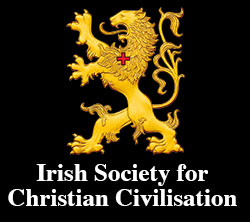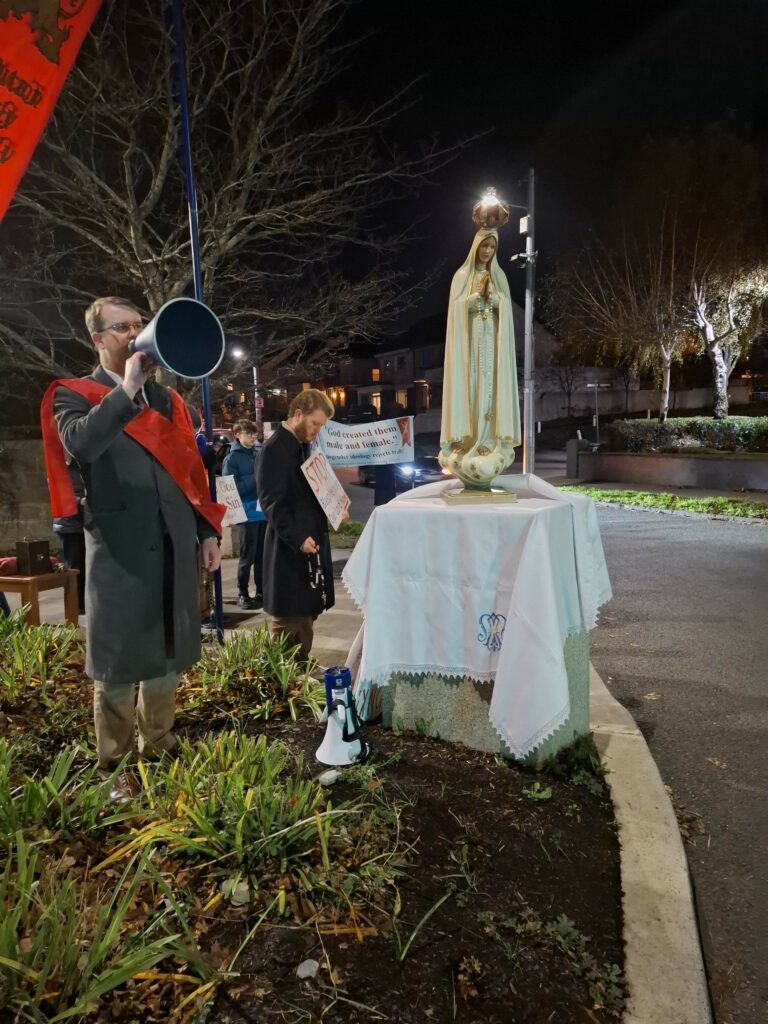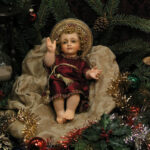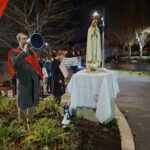By Domenick Galatolo
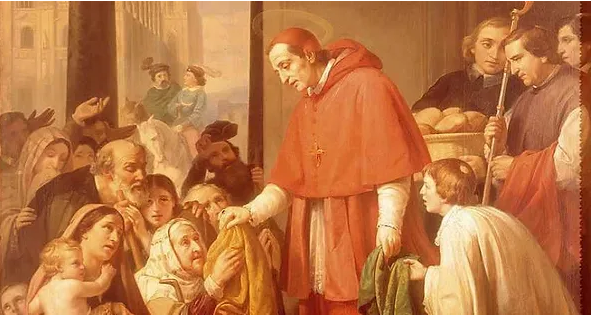
The Coronavirus is not the first epidemic to strike the world. Yet as churches are closed and the sacraments are difficult to find, the question arises: How did the Church and the saints deal with plagues in the past?
In the golden pages of history, we find a holy bishop who faced a virus more deadly than the Coronavirus.
From 1576 to 1578, a plague ravaged through northern Italy killing tens of thousands. The epidemic was known as St. Charles Plague because of the heroic response of the Cardinal Archbishop of Milan, St. Charles Borromeo.
Stay in Place or the Salvation of Souls
On 11 August 1576, the plague broke out in the northern quarter of Milan as festivities were being planned for the arrival of the famed Don Juan of Austria. Hearing of the outbreak, most of the secular authorities along with Don Juan fled. St. Charles was attending the funeral of a bishop outside the city when he heard the news. Instead of staying in place or fleeing, he immediately set forth toward the city. As he entered Milan, many people rushed out crying for mercy.
Without resting from his journey, St. Charles went straight to the cathedral and said a short prayer. After appealing to God for help, he advanced into the epicenter of the outbreak, not even taking the time to change out of his dusty riding clothes.
When he finally retired to his episcopal palace, he found a few remaining government officials waiting for him. They asked St. Charles to take command of the city as their leaders, including the governor, had abandoned their posts.
St. Charles accepted the burden, saying:
“A long time ago I resolved never to leave undone anything which might be for my people’s good. I beg you, above all, not to lose heart. Do not be affected by the example of those born and bred in the city who hurriedly abandoned it by flight at the very moment when it needed help.”
Since the authorities out of fear of contagion had already forbid public processions and religious ceremonies, many souls were deprived of the Sacraments. St. Charles said that it was because of this that the wrath of God had been called down upon Milan. Therefore, he told the officials that the only cure was to pray and do penance more piously than before.
“I will do my duty to the utmost”
To prepare himself for what lay ahead, St. Charles offered himself as an expiatory victim for the sins of his people. He also organised his affairs and made his last will. After this preparation, he went out every day to visit the sick and dying.
Profoundly moved by their suffering, St. Charles said:
“The dreadful state of these wretched creatures, everything lacking both for soul and body. These unhappy children seem to look on me as the cause of all their ills. Their silence reproaches me for my idleness. I put off holding out a helping hand when by my example I should have moved others to pity. I will delay no longer. By the grace of God, I will do my duty to the utmost.”
Click here to Subscribe to our Newsletter
He redoubled his efforts, focusing mainly on the spiritual welfare of the beleaguered.
“Do not prefer a late death to a holy one”
Many priests in Milan were in hiding, fearing they might catch the disease. Even among the holy Cardinal’s household, many fled. Of those who stayed some refused to join him when he went into infected houses. However, St. Charles sent out a beautiful appeal to his absent priests, saying:
“We have only one life and we should spend it for Jesus Christ and souls, not as we wish, but at the time and in the way God wishes. It would show presumption and neglect of our duty and God’s service to fail to do this.”
The saint rebuked his priests: “Do not be so forgetful of your priesthood as to prefer a late death to a holy one.”
Answering the call, many secular priests and Capuchins fathers heroically served the sick especially in the leper house, which doubled as an emergency hospital. After the plague subsided, not one of St. Charles companions had perished, but many priests who stayed back and refused to help had been stricken.
“Do not despise ordinary remedies”
St. Charles advised his priests not to “neglect human means, such as preventatives, remedies, doctors, everything that you can use to keep off infection, for such means are in no way opposed to our doing our duty.”
Whenever people urged St. Charles to avoid unnecessary risk, he would reply, “God can replace us.” But at the same time, he was not imprudent. Answering a concern of the Bishop of Brescia, St. Charles affirmed: “From the beginning I resolved to place myself entirely in God’s hands, without however despising ordinary remedies.”
St. Charles issued prudent guidelines. The faithful were told not to gather in crowds and avoid contact with each other. Masses were not cancelled but only held outdoors if the church was too cramped. He ordered more Masses said than before. Catechism classes were moved to street corners. He had separate places in Church for the disease-stricken and separate holy water fonts for them. His counsel to the clergy and magistrates was to “take the plague of the soul in consideration more than the contagion of the body which, for many reasons, is less pernicious.”
The Necessity of the Sacraments in Times of Hardship
Although the death rate and contagion rate were extremely high, St. Charles insisted on public prayer and penance. Ashes were constantly distributed. Three processions a week were held. In these processions, St. Charles walked barefoot wearing a thick penitential cord around his neck. Bells rang seven times a day for public prayer and the singing of psalms.
As those inflicted could not leave their homes to attend Mass or the processions, St. Charles set up nineteen columns throughout the city. At the foot of these pillars, public Masses were celebrated every morning. This allowed the sick to assist at Mass every day and the priests would distribute the Holy Eucharist to all the victims of the plague through their home windows.
Even today, these pillars with crosses on top are visible all over Milan.
St. Charles went nearly every day to the leper house to give the Sacraments to the suffering. He baptised newborns and gave last rights to the dying.
A certain Capuchin brother, James, who worked in the leper house and saw St. Charles’ good works at the time, said, “He often goes to the lazer [leper] house to console the sick . . . into huts and private houses to speak to the sick and comfort them, as well as providing for all their needs. He fears nothing. It is useless to try to frighten him. It is true that he exposes himself much to danger but so far he has been preserved by the special grace of God, he says he cannot do otherwise. Indeed, the city has no other help and consolation.”
However, just as today, not all men fear God or take advantage of suffering to repent. Some young Milanese nobles decided to flee the plague and practice impurity and immorality in a villa far away from any city. They shut themselves up in this villa, which they dubbed the “Academy of Love.” Yet these reprobates soon found out that God is not mocked, even in the most secluded locations. The plague broke out in the villa and few sinners survived.
“Only by the Mercy of God”
By Christmas of 1577, the plague had abated. At the end of the plague, 17,000 people had died in Milan out of a population of 120,000. This number included 120 priests (most of these had fled). However, in the smaller city of Venice, 40,000 people died in the same two years. Why had Milan been spared from a greater loss?
St. Charles answers:
“Not by our prudence, which was caught asleep. Not by science of the doctors who could not discover the sources of the contagion, much less a cure. Not by the care of those in authority who abandoned the city. No, my dear children, but only by the mercy of God.”
The Catholic Response to Coronavirus
In stark contrast to St. Charles, New York Governor Andrew Cuomo – a baptised Catholic – issued a recent statement, mocking and excluding God from the fight against the Covid-19. The pro-abortion Governor congratulated himself during a press conference, saying: “The number [of infections] is down because we brought the numbers down. God did not do that. Fate did not do that. Destiny did not do that. A lot of pain and suffering did that.”
The crisis of faith is obvious. In this time of great need, most Catholics are spiritual orphans. No Masses. No Confessions. No Last Rights. No Saint Charles Borromeos. The bishop of Springfield, Mass., for example, suspended the Last Rites in all instances in his diocese. At their final hour, the dying are deprived of the Church’s spiritual assistance and consolation.
As John Horvat points out in his column, “The Coronavirus Is a Call to Return to God,” our reaction “reflects a society that has turned its back on God. We face the crisis trusting only in ourselves and our devices.”
What the world needs most are more St. Charles Borromeos, more heroic shepherds to restore the faith, promote confidence in God’s Providence and awaken true devotion to the maternal and Immaculate Heart of Mary.
Saint Charles Borromeo, pray for us!
As seen on TFP Student Action
Bibliography: Reformer: St. Charles Borromeo by Margaret Yeo (CITY: The Bruce Publishing Company, 1938).
This year, it is more crucial than ever that we turn to prayer and intercession to increase devotion to Our Lady across our country. That’s why you’re invited to join us in the Three Hail Marys Pledge, a powerful devotion that can bring personal spiritual benefits and national transformation. By reciting three Hail Marys daily, you honour the Immaculate Heart of Mary and seek her intercession for the conversion of sinners, the salvation of souls and the restoration of Ireland’s Catholic Faith. This ancient devotion, revealed to Saint Mechtilde, promises spiritual benefits including protection from mortal sin and the assurance of a good death. Your daily prayers will contribute to an increase in devotion to Our Lady, the conversion of sinners and the moral renewal of our country. Let us commit to this powerful devotion and seek the guidance and protection of Our Lady.


